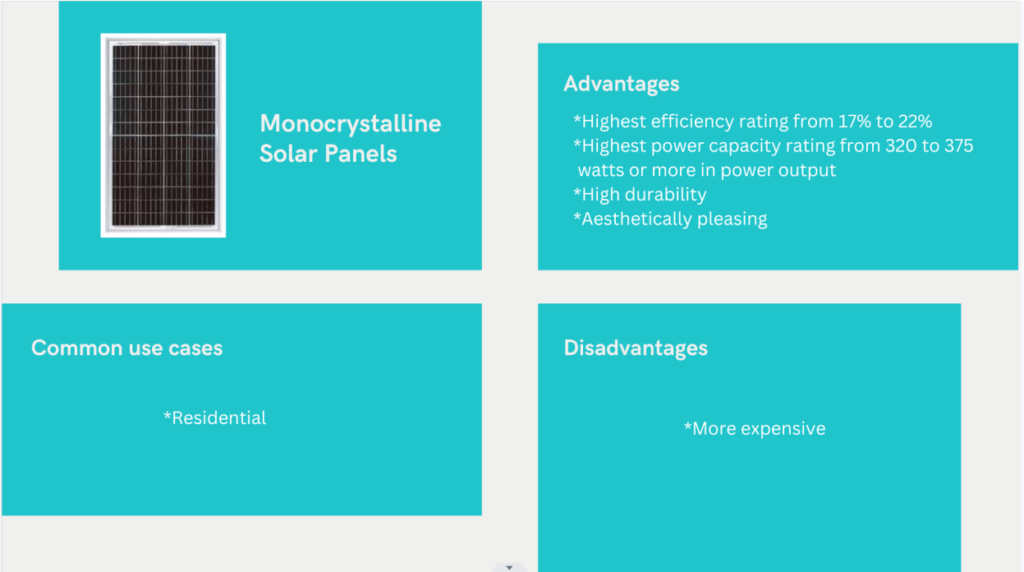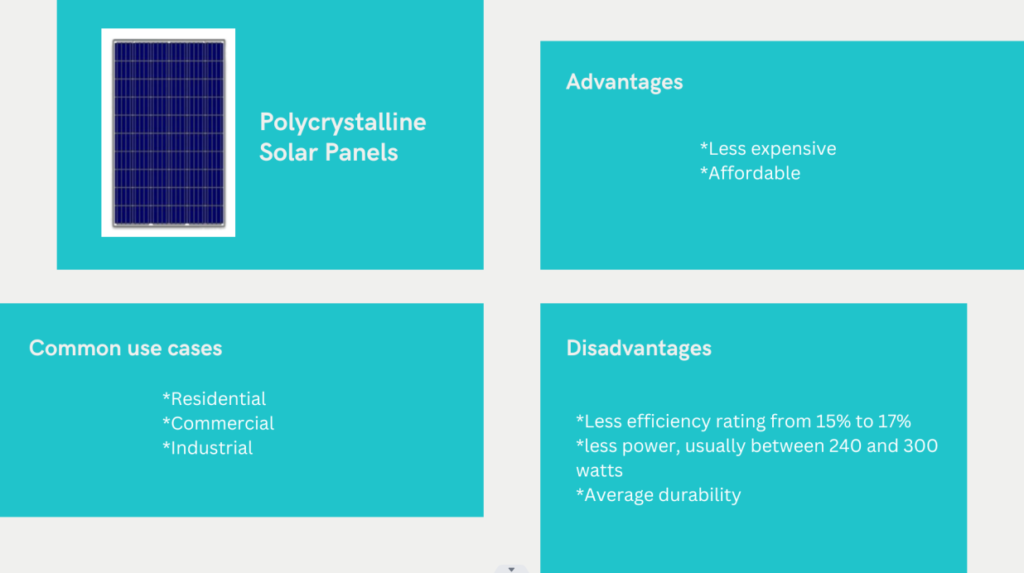
Highest performance: Monocrystalline solar panels
Monocrystalline solar panels have an efficiency rating of 17% to 22%, making them the most efficient solar panel type. Monocrystalline panels have a higher efficiency rating, which makes them ideal for homes with limited roof space since you will need fewer panels to generate the amount of energy you need.
Solar panels made of monocrystalline crystals are efficient because of their manufacturing process. Since monocrystalline solar cells are made up of one crystal of silicon, electrons are able to flow easily throughout the cell, which increases its efficiency.
A monocrystalline panel has not only the highest efficiency rating but usually has the highest power capacity rating as well. Today’s monocrystalline panels typically range from 320 to 375 watts or more in power output!

Mid-tier performance: Polycrystalline solar panels
In general, polycrystalline solar panels will have an efficiency rating of 15% to 17%. It is because of how electrons move through the solar cell that the efficiency ratings are lower. In polycrystalline cells, electrons cannot move as easily to and from silicon cells due to the multiple silicon cells. This decreases the efficiency of the panel.
Since polycrystalline solar panels have lower efficiency, they tend to produce less power, usually between 240 and 300 watts, than monocrystalline panels. There are polycrystalline panels with power ratings over 300 watts.
New technologies and manufacturing processes, however, have given polycrystalline panels a slight boost in efficiency and power ratings over the years, gradually closing the performance gap between monocrystalline and polycrystalline panels.

Lowest performance: Thin film solar panels
Solar panels made of thin film have incredibly low-efficiency ratings. The efficiency of thin films was previously in the single digits as recently as a few years ago. The efficiency of thin film panels that are commercially available is generally between 10 and 13%. Researchers have recently achieved 23.4% efficiency with thin-film cell prototypes.
For thin-film solar panels to generate the same amount of electricity as crystalline silicon panels, you would need to install many panels over a large area. In residential installations with limited space, thin film solar panels are not really a good option.
An interesting fact! The best temperature coefficient is found in thin film solar panels.
Thin film panels have higher temperature coefficients than other categories, meaning they produce less electricity as their temperature increases, despite having lower performance specs. For over 25°C the panel gets, the temperature coefficient indicates how much power will be lost every 1°C .
In general, monocrystalline and polycrystalline panels have temperature coefficients between -0.3% and -0.5% per °C. Comparatively, thin film panels are much better at handling heat than other panel types since their coefficient of thermal resistance is around -0.2% per degree Celsius.

Thanks for reading.

